Dolores River
After two weeks in the Mancos area we decided it was time to move on, to see what’s over the next hill — where hill means 9,000 ft pass.
We set out early from the campground and stopped in Mancos to get some gas and grab a last couple of espressos from Fahrenheit coffee roasters. But, when I walked out of the gas station after paying, I noticed a puddle of liquid under the bus. Crap. There are only two liquids in the back of the bus, water and gas. I crawled under the bus and unfortunately, this was not water.
In fact I could see the gas dripping out of a T-valve that would send gas up to the generator, if we had one. Leaking gas is always bad, but this was leaking gas that was dripping down about four inches from the tailpipe. I have no idea how hot the tail pipe is 20 feet from the engine, but I’d guess it’s hot enough to ignite gasoline vapors.
The gas station had a repair shop attached, though it seemed to mainly do tires. I wandered over and started talking to a couple of the kids that worked there and got their permission to pull the bus over, off to the side so I work under it. They even gave me a couple rags. I got under and decided to start with the rubber hose, which I figured was the most likely candidate to have cracked. Certainly the easiest fix, which is my own personal version of Occam’s razor — start with the easiest possible fix.
I clamped the rubber hose coming out of the tank and cut it lose from the joint, trimmed a couple of inches and stuck it back on with two new hose clamps. The dripping stopped. I went up and started the engine and went back to have a look. Still dripping. Damn. I turned it off and crawled back under to take apart the joint and get some pipe dope in there. I put a good amount of pipe dope on all three pieces, but as I was tightening it I was causing gas to come dripping out. I spun around a connector piece that seemed weak and realized it was cracked, bingo. Bought a new piece from the shop, which had some brass fittings, for $3, doped it all out and tightened everything back up. Started the engine and no leaks. A little over an hour and only $3 — if only all the bus problems were that easily solved.
I took the long way out of Mancos, but we were back on the road by noon.
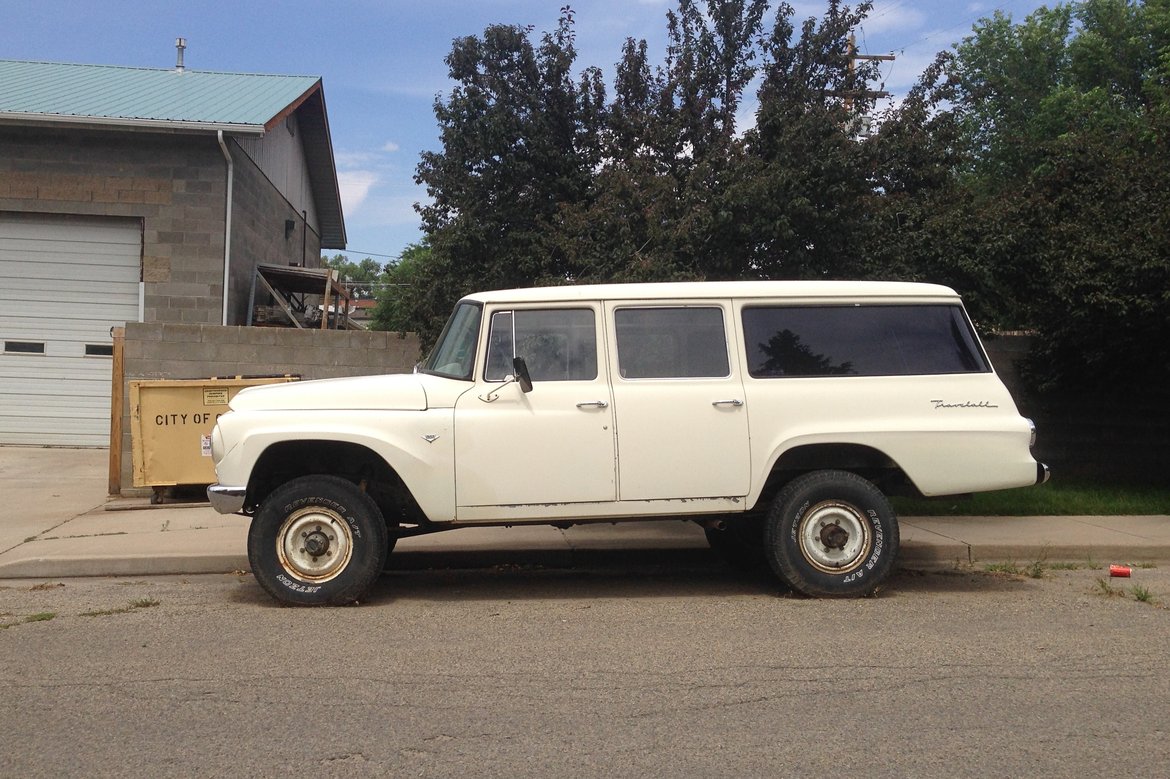
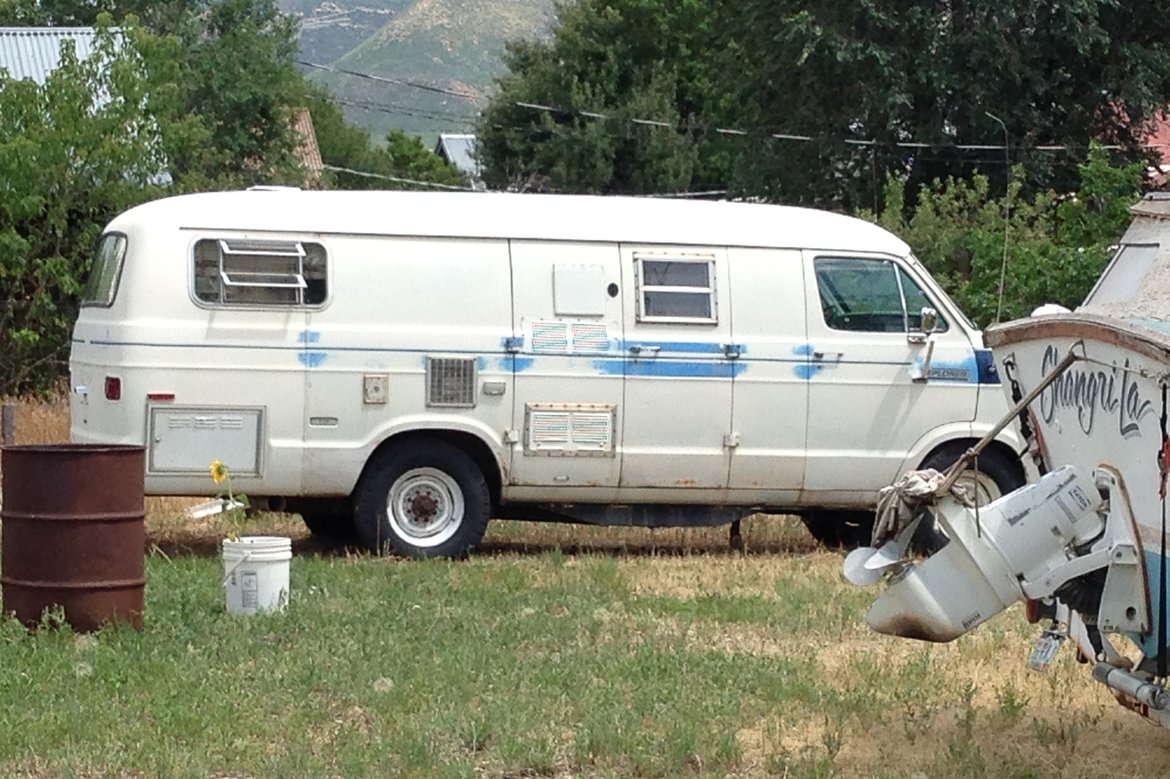
Needless to say hitting the road at the crack of noon, while pretty good considering, was not good when we had about four hours to go. We’ve adopted what some fulltimers call the 2, 2, 2 policy (never drive more than two hours, never get there later than 2 o’clock and never stay less than two days). There was no way we were going to make it by two and in this case it was more than arbitrary, we knew a big storm was supposed to roll in to where we were headed that evening. And let’s just say that spending my morning under rather than in the bus took some of my enthusiasm for further struggles away.
By two o’clock we were well on our way to Naturita, but it was hard to tell where Naturita was because a massive and very nasty looking storm had swallowed the horizon. We stopped at the side of the road to regroup and rethink our options. We talked over a couple different plans and ended up deciding to backtrack a few miles to a sign we’d both noticed that said national forest access. Signs like that are all over the place around here, sometimes the national forest ends up being a couple miles, sometimes it’s twenty or thirty. It’s always a gamble, but gambling beats a certain storm so we headed off down a dirt road that, as they tend to do, got progressively worse until it practically dove off a cliff down to the banks of the Dolores river.
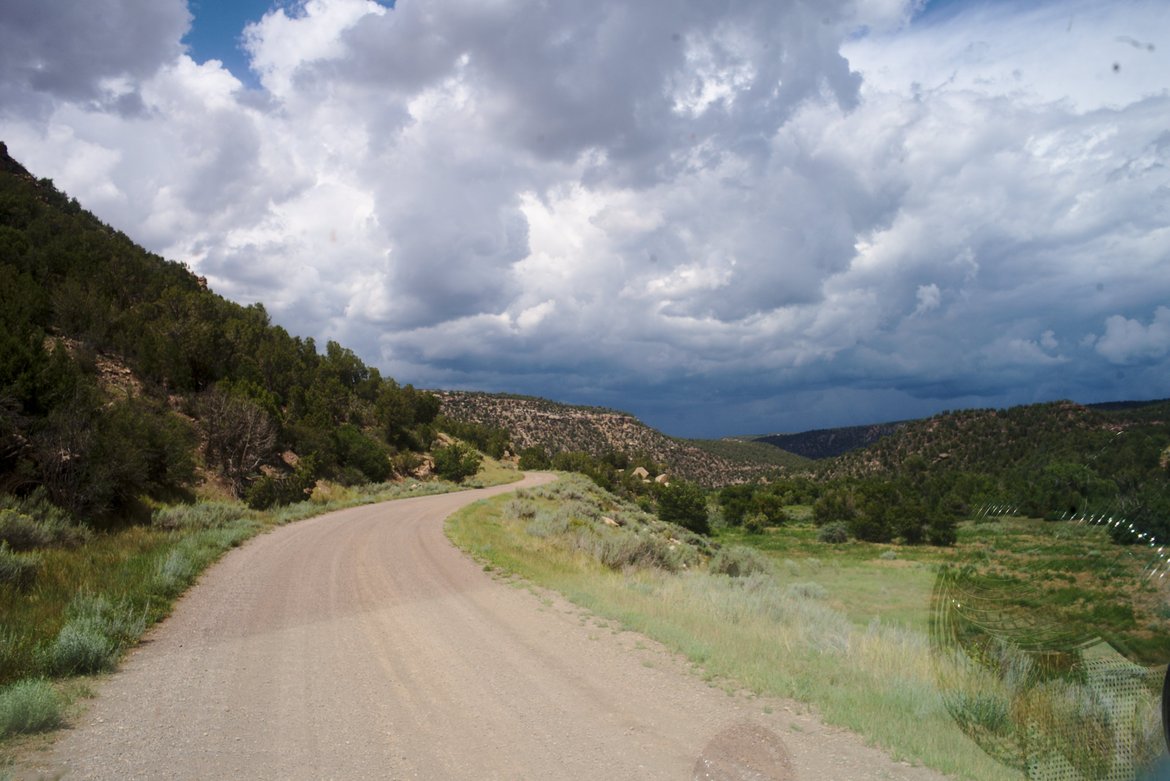
At the bottom of the canyon was the most decayed, ramshackle national campground I’ve ever encountered. Perfect. Even the signs were falling apart.

We found a site way off by itself — not that there was anyone around, in all our time down by the river we only had two other people in the campground — about 30 feet from the water and headed down to the river for a swim.
Hot days, cold water. Just about perfect. There was even a field of sunflowers next to our campsite.
We liked it so much in fact that we stayed four days. We might have stayed longer, but one afternoon a couple of women foraging for herbs stopped by and we got to talking about the area and eventually we ended up talking archeology sites and potsherds. These were the women who told the story about the museum smashing pots to fit them in a drawer. But they told us about a place they said we’d have to ourselves that was full of pictographs and houses built into a rock, both new and old. Naturally we had to go so we packed up and left the next day.
I’ll write about that adventure next time, but I’ve been thinking ever since about how if it weren’t for the bus’s fuel line cracking we’d have never seen the Dolores river, and never made it to one of the best canyons we’ve explored in this area. Some people call this coincidence, but those people lack perception. Coincidence only exists when you’re not paying attention. There are no coincidences, just massively complicated intricate patterns we can’t begin to comprehend. At best you can feel them moving around you, moving through you, you can reach out and touch them, bounce from node to node for a while. It’s a bit like lying in a river, everything flowing around, over and through you.
One of the things about living on the road is that the highs tend to be higher and the lows correspondingly lower, which produces an odd kind of balance and has a lot to teach about the center, but you also learn that the highs and lows are not separate things, they’re interrelated and connected in all kinds of interesting and malleable ways. There are not hard and fast lines between high and low moments like our brains would have us pretend there are. Each point in the pattern, each node in the network gets information from all the other. Everything needs everything else. Everything feeds back through to everything else. No broken fuel line, no Dolores river. It just wouldn’t be as fun any other way.
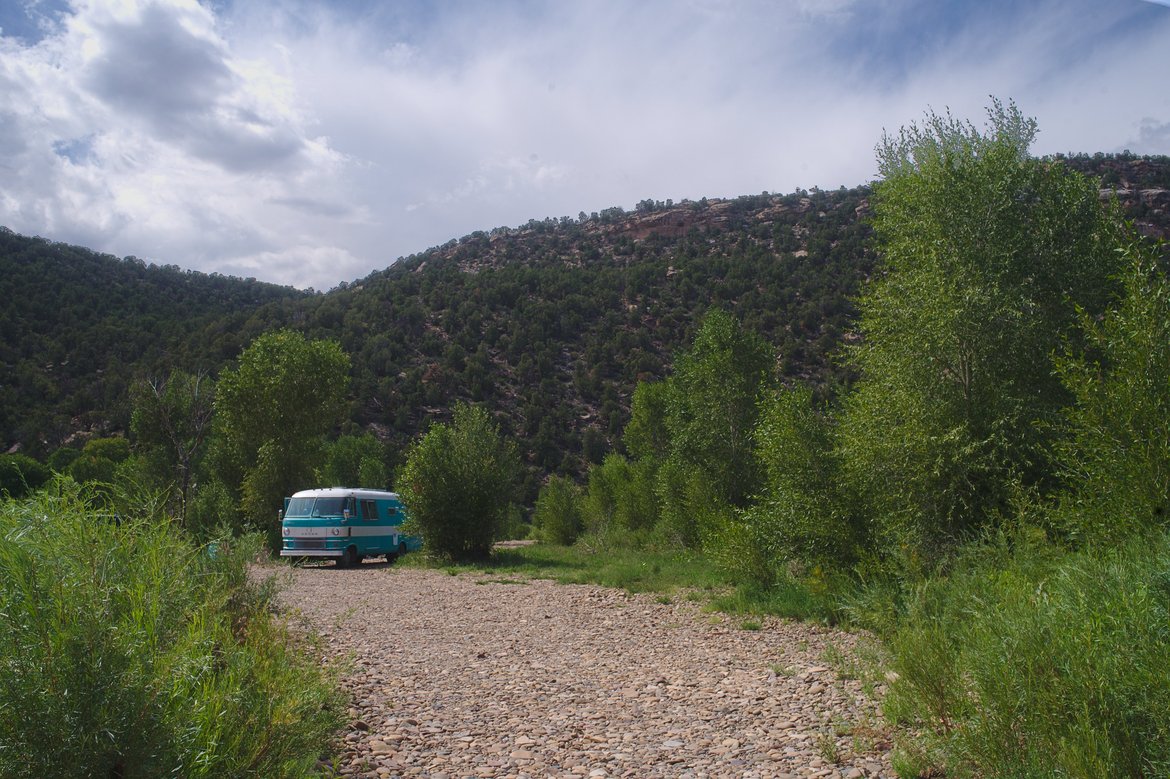
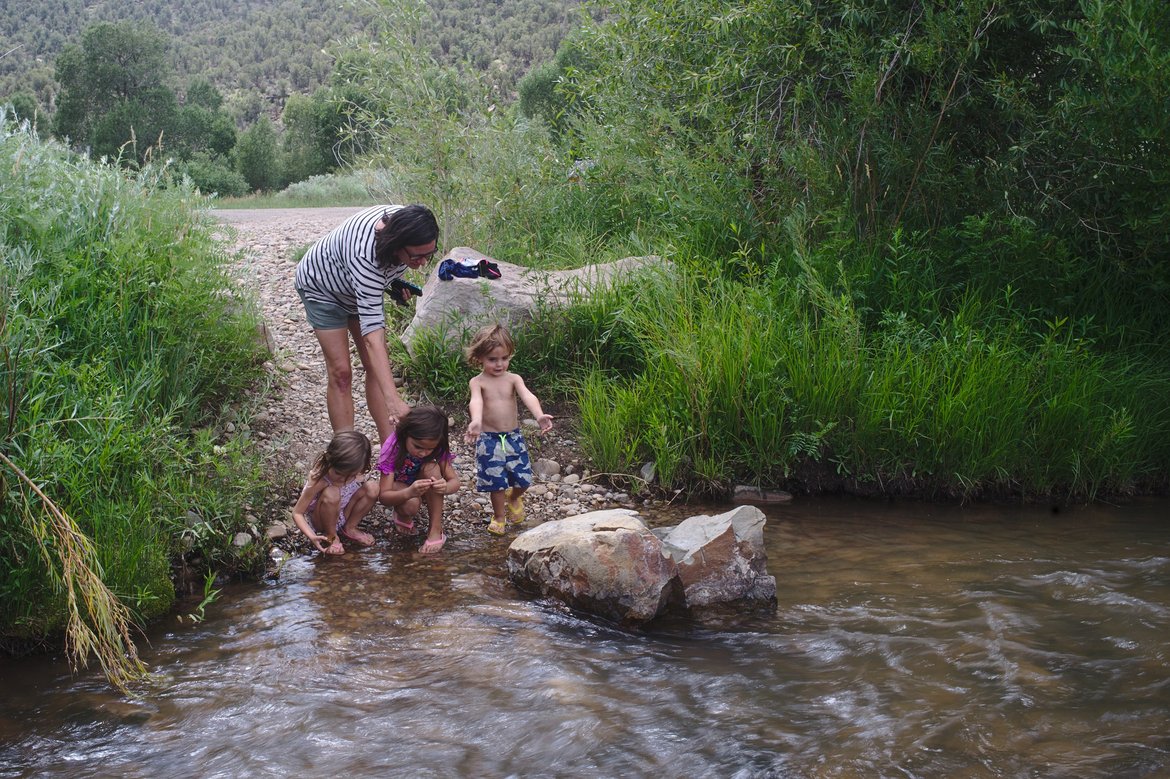
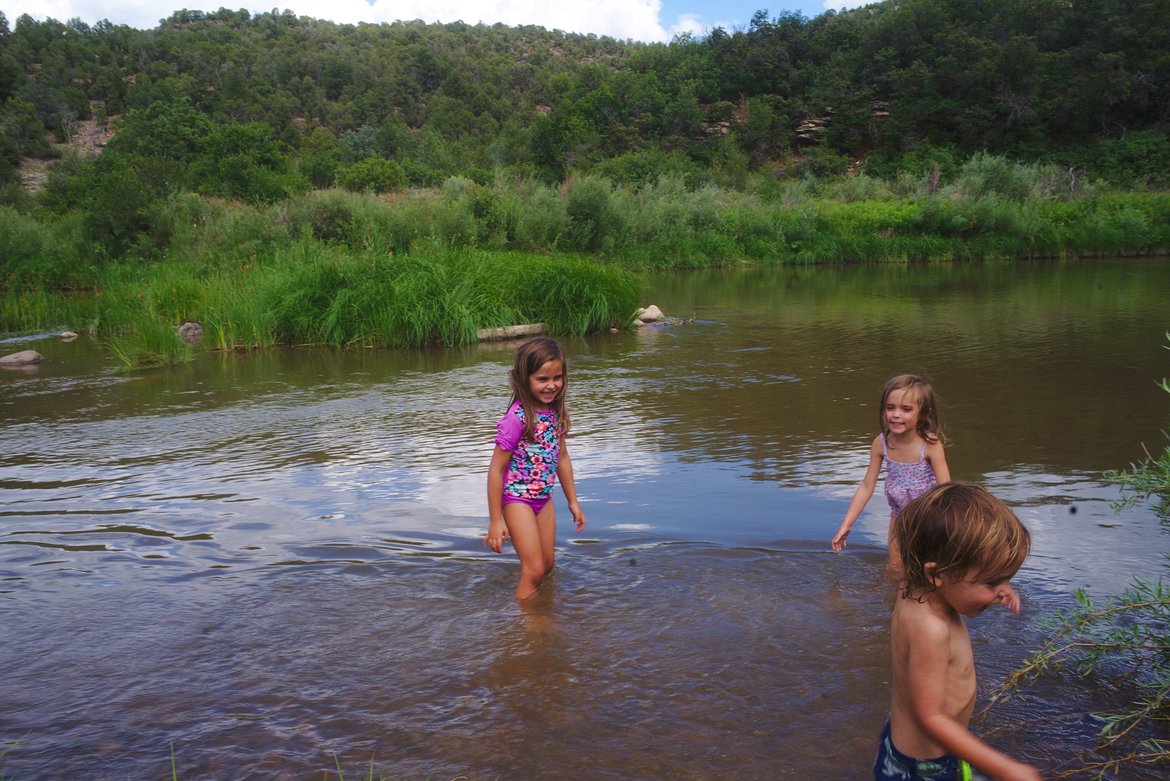
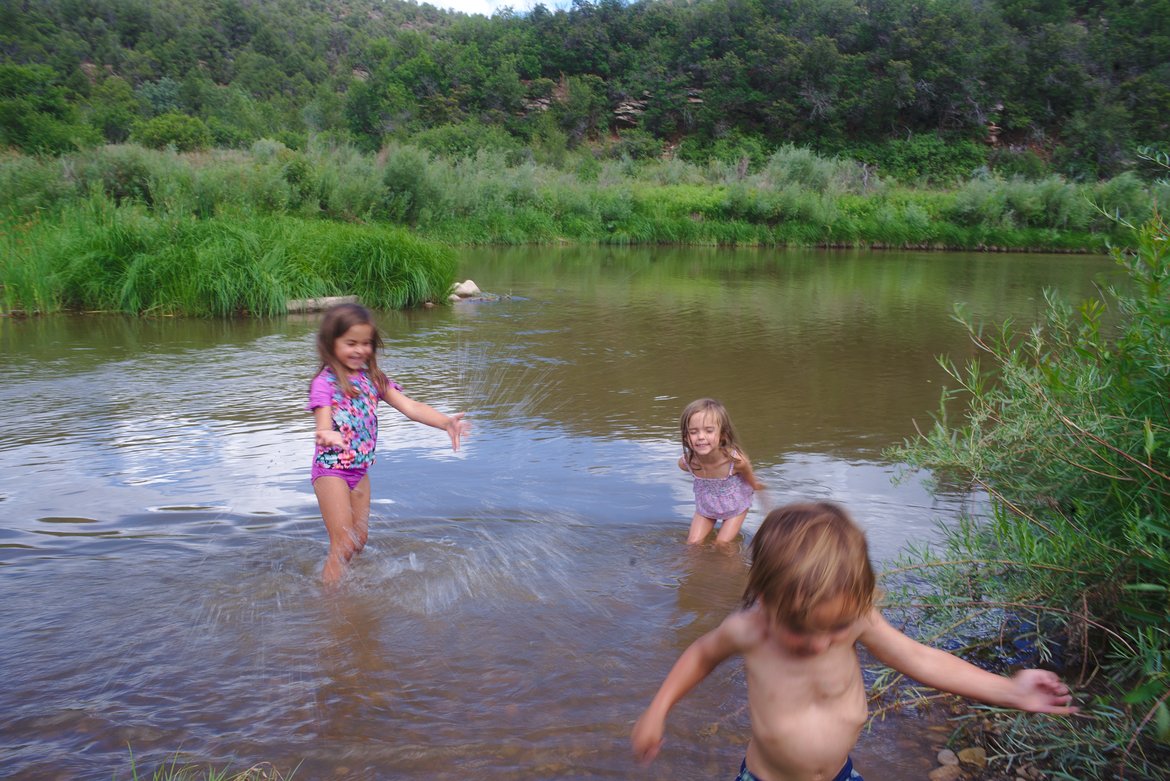
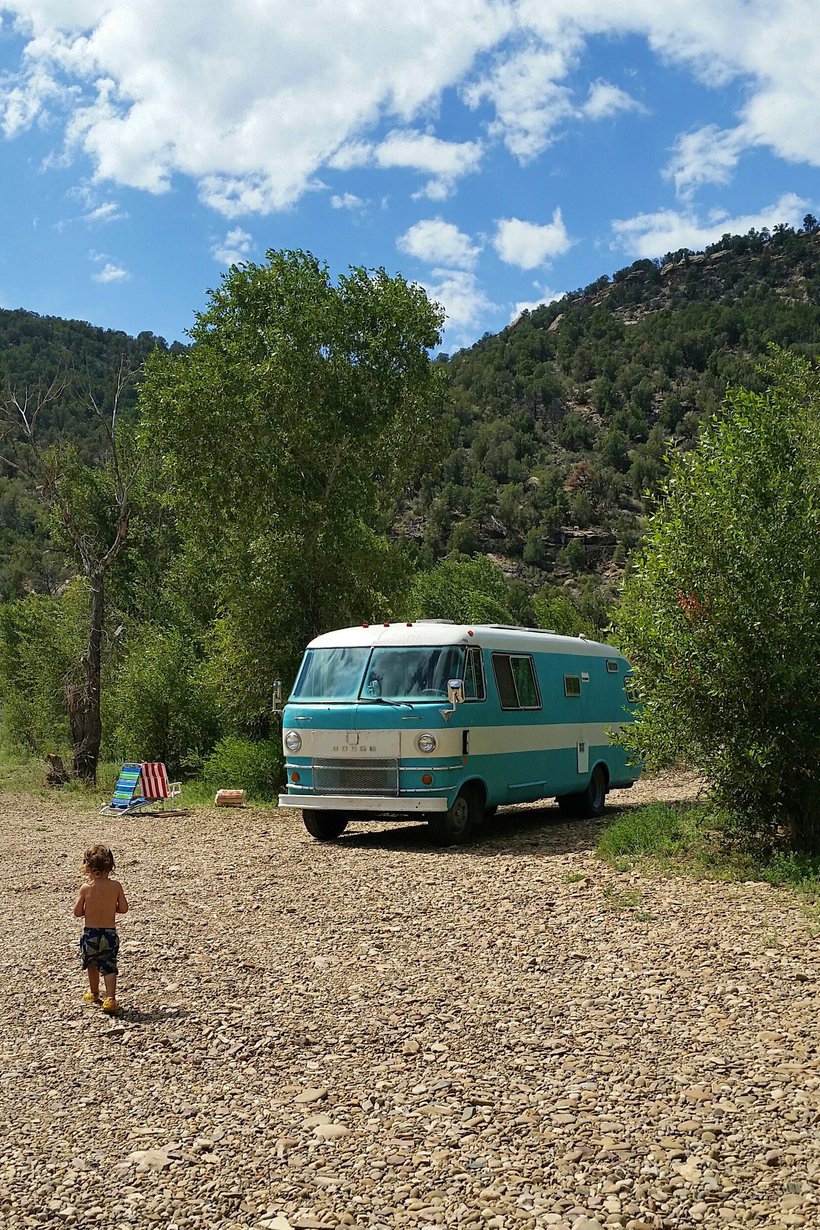
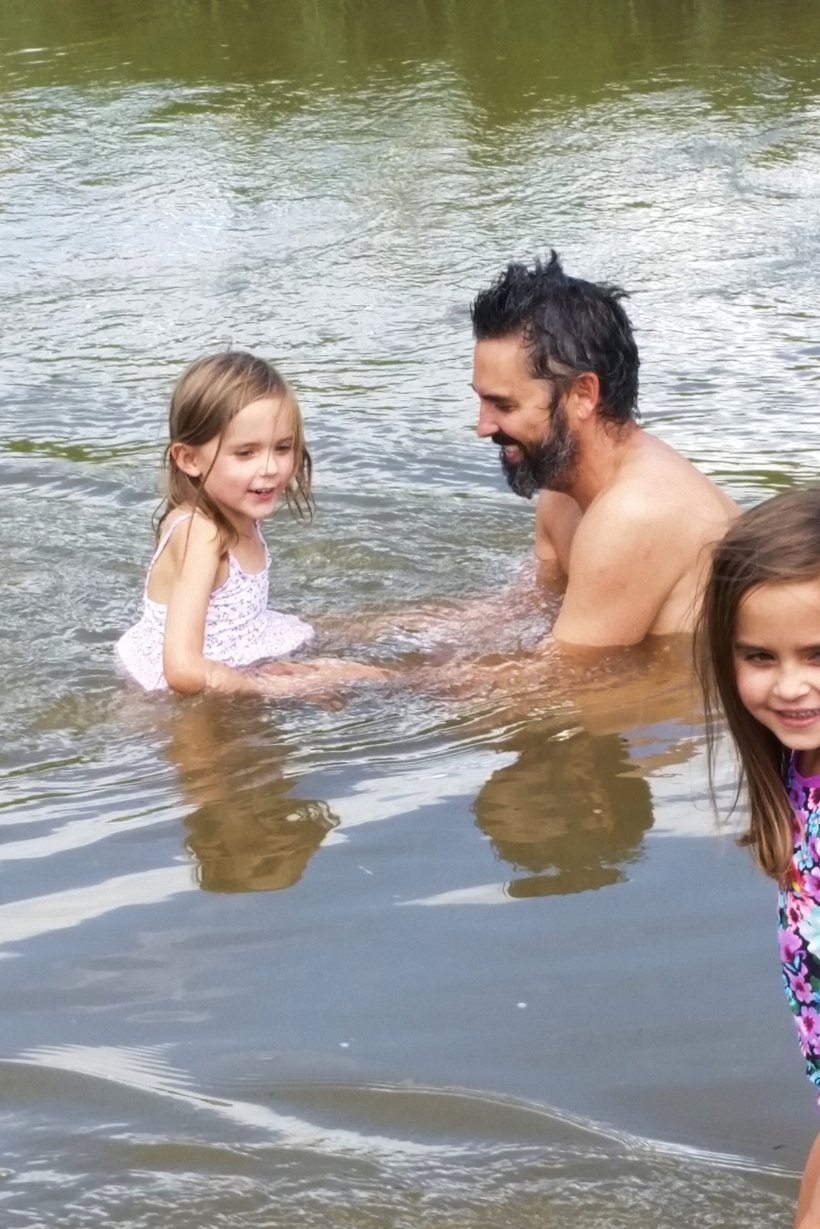
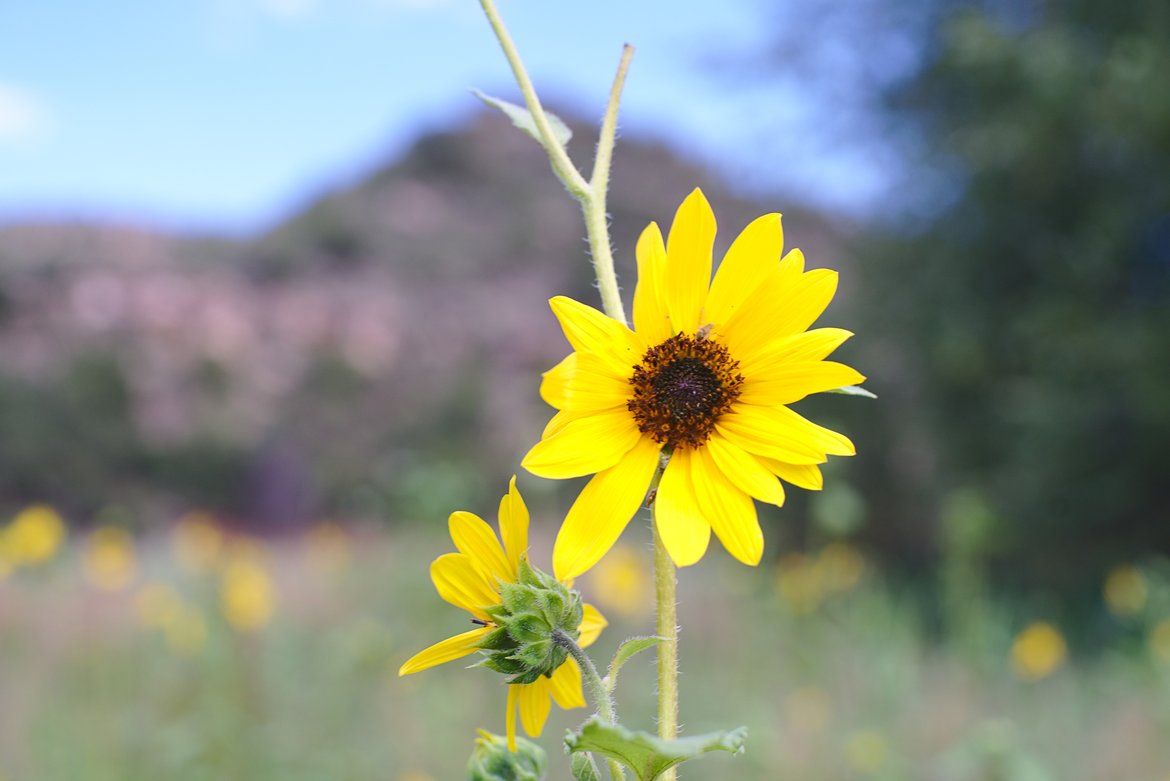


2 Comments
Every summer we used to camp all over TX, NM and CO when i was growing up. We had an old station wagon and a pop-up camper, and it was the best. This brings back so many great memories! Hope y’all continue to have a wonderful trip, i enjoy reading your blog posts :)
& say hi to Corrinne for me!
~Lou
Thanks Lou, and Corrinne says hi.
Thoughts?
Please leave a reply:
All comments are moderated, so you won’t see it right away. And please remember Kurt Vonnegut's rule: “god damn it, you’ve got to be kind.” You can use Markdown or HTML to format your comments. The allowed tags are
<b>, <i>, <em>, <strong>, <a>. To create a new paragraph hit return twice.